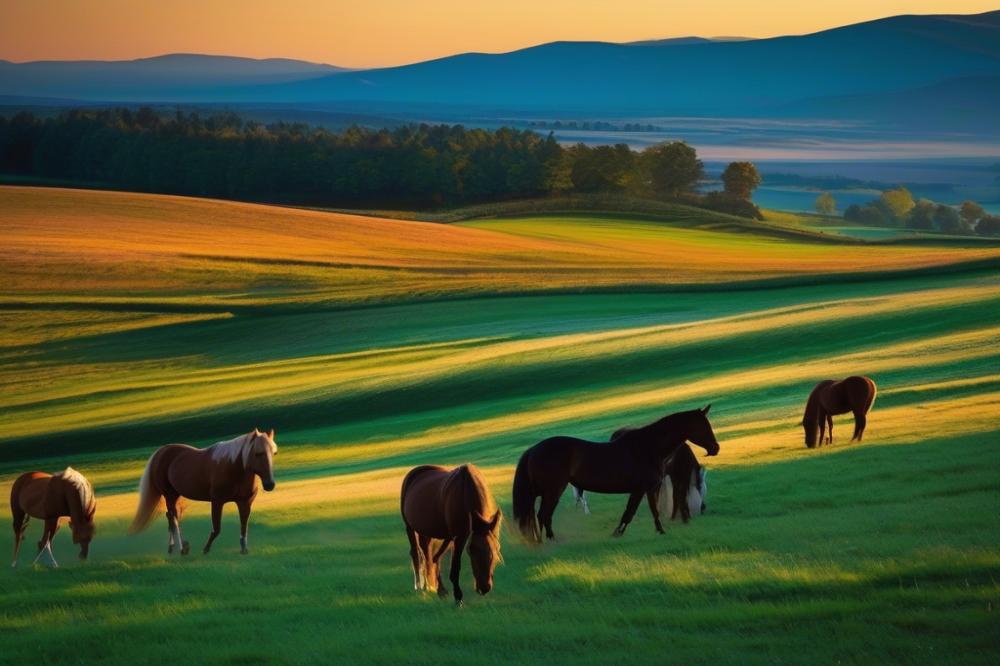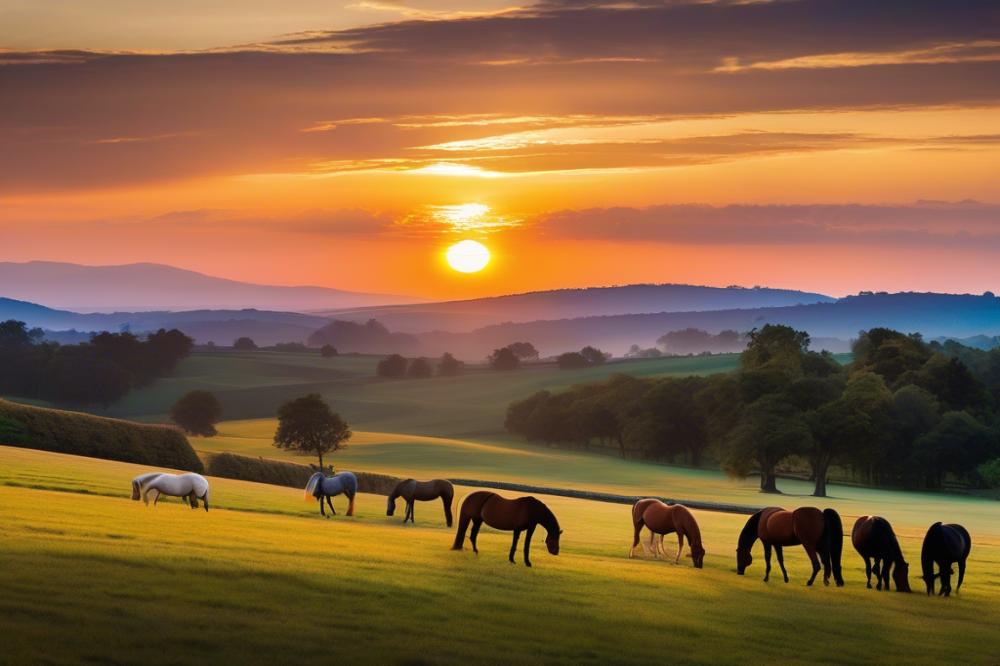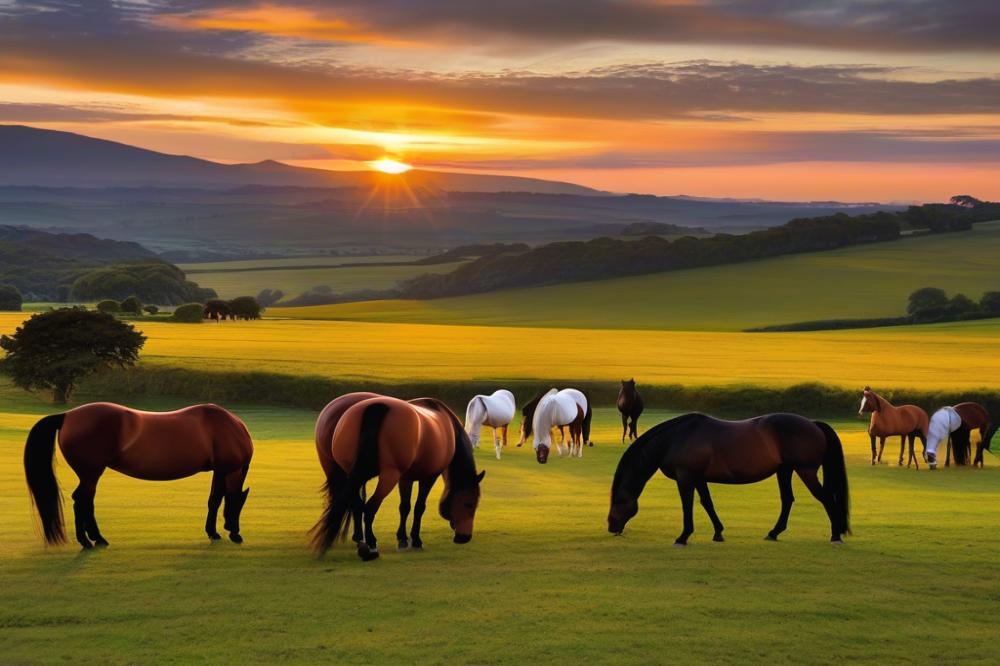Understanding the Basics of horse breeding
horse breeding plays a vital role in the equine industry. It involves the careful selection of horses to produce a specific type or quality of offspring. This practice is not just about pairing any two horses; there are numerous factors that contribute to successful outcomes. Breeders aim to improve traits such as speed, stamina, temperament, and overall health. Achieving these goals can have a significant impact on riding disciplines, competition, and even leisure riding.
The goals of breeding horses revolve around various desired characteristics. Some breeders focus on performance, wanting to create horses that excel in specific sports. Others may prioritize conformation, health, and trainability. Ultimately, the aspirations of each breeder guide their decisions during the mating process. With careful planning, they can enhance the lineage of their stock. Good breeding practices uphold the standards needed for future generations.
This article will delve into important elements of horse breeding. Topics will include genetics and how they influence traits in offspring. Breeders will also learn about the mating process, the significance of pedigree, and the role of careful selection. Each of these components contributes to the overall success of producing quality horses. Understanding these principles is crucial for anyone wanting to engage in breeding within the equine industry.
Understanding Horse Breeding

Horse breeding involves the pairing of male and female horses to produce offspring. This process requires knowledge of genetic principles and the physical traits that contribute to a horse’s performance and health. Breeding is not merely about mixing two horses together; it is a thoughtful decision that aims for specific outcomes.
Importance of horse conformation in Breeding Decisions
Conformation refers to the physical structure of a horse. A horse’s body shape, size, and proportions play a major role in its ability to perform certain tasks. Ideal conformation improves performance in various disciplines, whether for racing, jumping, or dressage. When selecting breeding stock, breeders must prioritize horses that have strong, balanced body structures. A horse with poor conformation may face physical issues, leading to unsatisfactory results. Hence, breeders study this aspect closely.
Overview of Breeding Goals: Performance, Temperament, and Health
Establishing breeding goals is essential before commencing the process. Performance is often a primary goal. Many breeders select lineage that has proven success in competition. Temperament is equally important, especially for horses expected to work with people. Calm, trainable horses are more sought after than those with unpredictable behavior. Health ranks high among priorities as well. Breeders should avoid horses with known genetic conditions. This careful selection aims to enhance the overall quality of the breed.
Discussion of Horse Lineage and Its Influence on Breeding
Lineage can heavily influence breeding choices. It refers to the ancestry of a horse, which provides insight into its potential traits. Horses with illustrious family histories often perform better in various equestrian activities. Knowledge of lineage helps breeders avoid genetic defects. When choosing a stallion or mare, considering their ancestry can lead to healthier offspring. This understanding is crucial for creating a strong future generation. Breeders use documented pedigrees to trace back generations, ensuring that they make informed decisions.
breeding techniques

There are two primary methods for breeding horses: natural and artificial insemination. Each technique has its own set of characteristics and outcomes. Understanding these can help breeders make informed decisions.
Natural Breeding
In natural breeding, a stallion and mare mate without any medical intervention. This approach has been used for centuries. One key benefit is that it allows horses to breed as they would in the wild. This often helps maintain natural behaviors and instincts. Breeders often find this method less invasive and more traditional.
However, natural breeding has drawbacks. It requires the physical presence of both animals, which can limit travel options. Additionally, the timing must be precise. If the mare is not in heat when the stallion is available, the opportunity could be lost.
Artificial Insemination
Artificial insemination (AI) uses collected semen to breed a mare. It offers flexibility since it can be done without the stallion being present. This method allows breeders to access superior genetics from across the country or even worldwide. AI can also help breed mares that may not be healthy enough for physical mating.
Nevertheless, AI is not without challenges. The process requires specialized knowledge and equipment. Breeders must also be skilled in timing. If done incorrectly, there is a risk of reduced success rates.
Reproductive Science
Reproductive science plays a critical role in both methods. Advances in this field have improved understanding of equine fertility. These improvements lead to higher success rates in breeding. Techniques such as ultrasound allow breeders to monitor the reproductive cycle of mares more accurately. Knowledge of hormone treatments can also enhance breeding success.
Genetic Testing and Selection
Genetic testing is increasingly important in breeding. This practice helps identify desirable traits and potential genetic issues. Breeders can make informed choices, ensuring healthy offspring. Knowing the genetic background can also help in avoiding hereditary diseases.
Careful selection based on genetic information leads to better outcomes. The use of this science allows for the enhancement of certain characteristics. Stronger and healthier horses are the ultimate goal. By combining genetic insights with effective breeding techniques, breeding efforts can achieve remarkable results.
Stud Services and Mare Care

Stud services involve the breeding of a mare to a stallion. This process usually takes place at a breeding farm, where chosen stallions are available for this purpose. Mare owners often lease the stallion’s services for a fee, which can vary greatly depending on the stallion’s pedigree and achievements. Understanding how it all works is crucial for successful breeding.
Factors to Consider When Choosing a Stallion
When selecting a stallion, several important factors need attention. First, examine the stallion’s pedigree. A strong lineage can enhance the qualities of the foal. Next, consider the stallion’s conformation and performance record. These traits impact offspring health and athletic ability. Also, the temperament of the stallion plays a role. Mates should be gentle, especially if the mare has a more sensitive nature.
Essential Care Practices for Pregnant Mares
Pregnant mares require special care as they prepare for foaling. Nutrition is key during this period; high-quality hay and grains are essential for both the health of the mare and the developing foal. Regular exercise also helps maintain the mare’s condition. As the due date approaches, creating a safe, clean environment becomes a priority. A quiet, spacious area supports a smoother foaling process.
Importance of Veterinary Care and Health Checks
Regular veterinary care is vital for pregnant mares. Functioning health checks are crucial to detect any potential issues early. Vaccinations and deworming are necessary to keep the mare and foal safe from diseases. Many veterinarians recommend routine check-ups throughout the pregnancy. This practice allows monitoring of the foal’s development and the mare’s well-being. Keeping a close eye on any changes in behavior or appetite also helps detect problems. Proper care lays a foundation for a healthy foal.
Foal Development
Foals begin their life journey the moment they are born. This period is crucial, as it sets the stage for their growth and future potential. From birth, foals are highly dependent on their mothers for nourishment. The first milk, known as colostrum, is packed with antibodies that help boost their immune system. Without this essential nutrient, foals may face health challenges in their early days.
Nutrition plays a vital role in the development of foals. After the initial weeks, their diet needs to evolve to meet their growing demands. Good feed typically includes high-quality hay and grain. Young horses should also have access to clean water at all times. Proper nutrition not only supports physical growth but also contributes to cognitive development.
Health care also cannot be neglected during this phase. Regular veterinary check-ups help spot any underlying issues. Vaccinations help protect foals from diseases that can be harmful as they grow. Hoof care is equally important. Young horses may experience growth spurts that affect their hooves, so timely trims are necessary.
Socialization is key for developing well-rounded individuals. Foals learn valuable skills by interacting with their mothers and other horses. These interactions help build confidence and teach essential herd behaviors. Time spent with humans is important too. Positive experiences with people can foster trust, making training easier in the future.
Genetics significantly influence a foal’s potential. The lineage of a horse often determines its athletic abilities. Bloodlines can indicate strengths in speed, endurance, or agility. An understanding of a foal’s heritage can offer insight into its future performance. Owners should take time to research the background of their horses.
Early training sets the foundation for future success. In the right environment, foals can begin simple handling exercises. These activities might include leading, grooming, or basic commands. Positive reinforcement can help them associate training with rewards. Developing these skills early creates a smoother transition to more advanced training later on.
Monitoring a foal’s progress is critical. Regular assessments can help identify any areas needing improvement. Adjustments in care, training, or nutrition can be made as needed. Each foal is different, and understanding these differences is important for maximizing their potential.
Overall, the early years of a horse’s life are filled with growth and learning. Proper nutrition, health care, socialization, and genetics all play their parts. Training early ensures they develop into well-adjusted athletes ready for their future roles.
Breeding Programs
Overview of breeding programs and their structure
Breeding programs are plans designed to produce specific types of horses. They typically focus on particular traits like speed, temperament, or conformation. Structure varies among programs. Some might prioritize thoroughbreds for racing, while others may favor quarter horses for work. Careful selection of stallions and mares is crucial. Breeders study bloodlines to understand the genetics at play. This research forms the backbone of their strategy.
Strategies for developing a successful breeding program
Creating a productive program requires thoughtful groundwork. First, set clear goals for what you want to achieve. This might involve selecting horses with proven racing performance or outstanding athletic abilities. Second, maintain a diverse gene pool. Avoid inbreeding; this can lead to health issues. Collaboration with veterinarians is vital as well. They help in making informed choices about health and genetics. Building strong partnerships with other breeders can enhance your knowledge, too. Networking and sharing experiences lead to better decision-making.
Importance of evaluating outcomes and making adjustments
Regular evaluation is necessary to measure a program’s success. Breeders must analyze the performance of foals after they are born. This ensures that the breeding goals align with actual results. If certain traits are lacking, adjustments may be needed. Sometimes, changing the stallion or mare is beneficial. Collecting data on each horse’s performance offers clarity on what works and what doesn’t. Adapting to these insights can significantly improve future breedings.
Discussion of breeding for performance and sustainable practices
Breeding for performance is often the main focus, but sustainability should not be overlooked. Adopting responsible practices helps maintain the health of the breed. Some breeders emphasize the importance of environmental factors. This could include pasture management and feed quality. Healthy horses have a better chance at success. Integrating humane and ethical practices forms the core of respectful breeding. Fostering a bond between horse and handler can lead to more satisfactory outcomes on all fronts. Balancing performance goals with sustainable methods leads to gratifying results for everyone involved.
Equine Health and Well-being
Equine health plays a critical role in the context of breeding. A strong and healthy mare or stallion is essential for producing quality offspring. Problems can arise if either parent has health issues. These issues may not only affect the individual animal but can also lead to complications in the breeding process itself. Proper care and attention should always be prioritized.
Common Health Issues Related to Breeding and Reproduction
Breeding-related health problems come in various forms. Some mares suffer from hormonal imbalances, affecting their ability to conceive. Mares might also face uterine infections, which can jeopardize pregnancies. Stallions can have issues too, such as low sperm counts or other reproductive challenges. Recognizing these concerns early can spare horse owners a great deal of trouble.
Best Practices for Maintaining the Health of Breeding Stock
Taking care of breeding stock requires diligence. Regular veterinary check-ups should be a top priority. These visits help catch potential issues before they escalate. Proper nutrition is just as important for equine health. Feed that provides essential vitamins and minerals supports overall well-being. Additionally, consistent exercise aids in maintaining healthy weight and muscle tone.
Role of Preventive Care in Overall Breeding Success
Preventive care is vital for ensuring breeding success. Vaccinations protect against diseases that could threaten both mare and foal. De-worming strategies minimize the risk of parasites, which can cause harm. A well-organized health record for each horse allows for quick access to needed information. Being proactive leads to healthier animals and ultimately better breeding outcomes.
Wrapping Up the Essentials
Throughout this article, we have explored the fundamental aspects of breeding horses. It’s crucial to have a solid understanding of genetics, horse conformation, and the various breeding techniques available. Each of these elements plays a significant role in producing healthy and capable foals. A well-informed breeder makes choices that enhance the quality and performance of horses.
As you continue your journey in the world of equines, remember that learning never truly ends. Each experience brings new insights and challenges. Engaging with other breeders, attending workshops, or participating in online forums can enrich your knowledge. Building connections with others who share your passion can open doors to new ideas and practices.
Embracing the responsibilities that come with breeding is paramount. It is not just about creating life; it involves caring for animals and making decisions that will impact their future. Horses require proper nutrition, healthcare, and appropriate living conditions. Be prepared for the commitment. Taking on these responsibilities means you are making a choice to contribute positively to the equine community.
Adopting ethical practices is vital in this endeavor. Respect for the animals should guide all your actions. Prioritizing their well-being over profit or prestige demonstrates integrity. Being a responsible breeder ensures that you not only meet the needs of your horses but also uphold the values of the equine community. By setting a good example, you help inspire others to do the same.
In summary, understanding horse breeding is an ongoing process filled with learning, responsibilities, and ethical considerations. The joy of contributing to the next generation of horses is unparalleled. Approach each step with care and knowledge, and continue to build a better future for both horses and the community.



